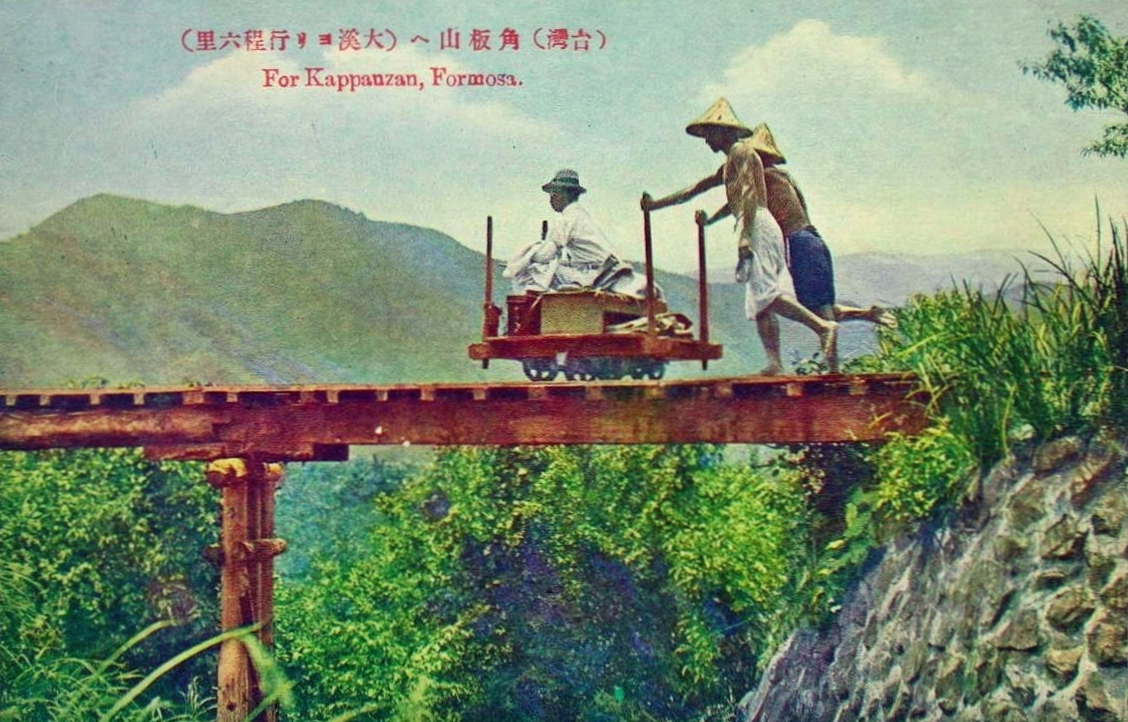Taiwanese push car railways on:
[Wikipedia]
[Google]
[Amazon]
 Taiwanese push car railways () or Taiwanese bamboo train () were a historic transportation system on Taiwan, based on
Taiwanese push car railways () or Taiwanese bamboo train () were a historic transportation system on Taiwan, based on
 Taiwanese push car railways () or Taiwanese bamboo train () were a historic transportation system on Taiwan, based on
Taiwanese push car railways () or Taiwanese bamboo train () were a historic transportation system on Taiwan, based on Japan
Japan ( ja, 日本, or , and formally , ''Nihonkoku'') is an island country in East Asia. It is situated in the northwest Pacific Ocean, and is bordered on the west by the Sea of Japan, while extending from the Sea of Okhotsk in the north ...
's daisha push car railways
Rail transport (also known as train transport) is a means of transport that transfers passengers and goods on wheeled vehicles running on rails, which are incorporated in tracks. In contrast to road transport, where the vehicles run on a pre ...
. After Taiwan was ceded to Japan, the push car system was brought to Taiwan. The push car railways were in general service from 1895 to the late 1940s. The push cars complemented the developing steam locomotive
A locomotive or engine is a rail transport vehicle that provides the Power (physics), motive power for a train. If a locomotive is capable of carrying a payload, it is usually rather referred to as a multiple unit, Motor coach (rail), motor ...
system on Taiwan.
Push cars were passenger and freight cars powered by human labor. The push cars operated on narrow gauge railway
A narrow-gauge railway (narrow-gauge railroad in the US) is a railway with a track gauge narrower than standard . Most narrow-gauge railways are between and .
Since narrow-gauge railways are usually built with tighter curves, smaller structur ...
s. In Taiwan, the gauge was 45 to 50 cm. The design of the push cars was simple; the foundation of the push car was a platform attached to railway wheels. Behind the platform were two raised poles, where push car operators could push the car along the railways. Passenger push cars could seat up to four people, although most passenger cars could only seat two. Freight push cars could carry up to 450 pounds (204 kg).
The first push car line in Taiwan ran from Tainan to Kaohsiung
Kaohsiung City (Mandarin Chinese: ; Wade–Giles: ''Kao¹-hsiung²;'' Pinyin: ''Gāoxióng'') is a special municipality located in southern Taiwan. It ranges from the coastal urban center to the rural Yushan Range with an area of . Kaohsi ...
; the line was completed in December 1895. The push car network ran across all of western, coastal Taiwan, running from Taipei to Kaohsiung. Push car lines were built across waterways and ran across inclined terrain. The push car system reached its peak during the late 1920s to mid-1930s. The push cars were gradually replaced by modern road systems that often ran parallel to the old push car railways.
See also
* Draisine * Hand car *Norry
A norry or nori ( km, ណូរី, , from the French word for lorry) was an improvised rail vehicle service from Cambodia. Lonely Planet describes it as "Cambodia's bamboo train". The trains ran at speeds of up to on the metre gauge tracks ar ...
References
* {{cite book, editor=Knapp, Ronald G., year=1980, chapter=Push Car Railways and Taiwan's Development , title=China's Island Frontier: Studies in the Historical Geography of Taiwan, pages=203–218 Rail transport in Taiwan